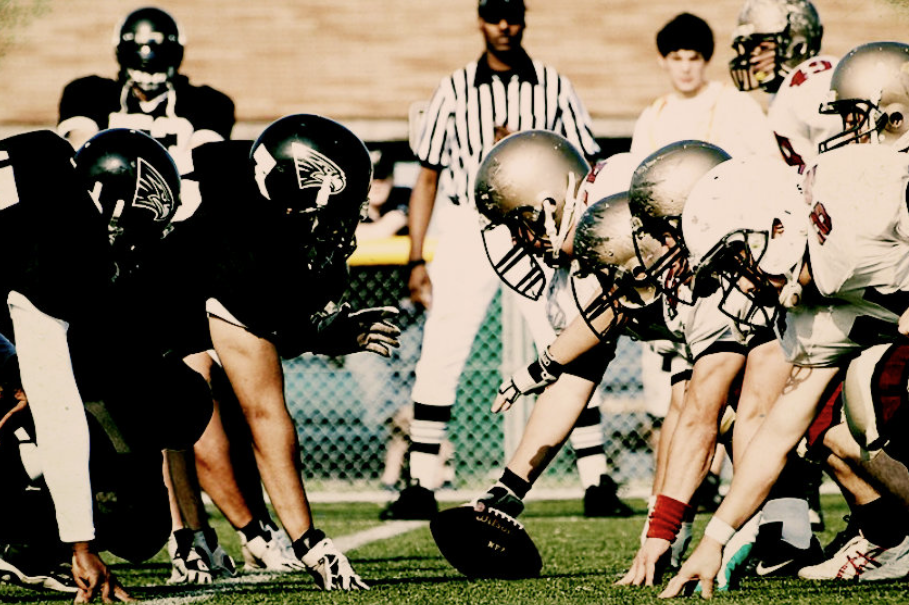
American Football is a highly competitive team sport, mainly played in the United States, with two teams of eleven players each. The objective is to score points by advancing the ball into the opponent’s end zone, either by running or passing.
American football is a game that uses strength and its blend of strategy and culture that has become deeply ingrained in American society, and it represents America and this game is known by others.
The game is played on a rectangular field measuring 120 yards in length and 53.3 yards in width. The field consists of a 100-yard playing area, with a 10-yard end zone on each side. At the back of each end zone are goalposts made up of two vertical uprights joined by a horizontal crossbar positioned 10 feet above the ground. The ball used in the game is an oval-shaped, prolate spheroid, commonly referred to as a “football.”
HERE ARE THE IMPORTANCE THAT YOU SHOULD KNOW:
TEAMWORK
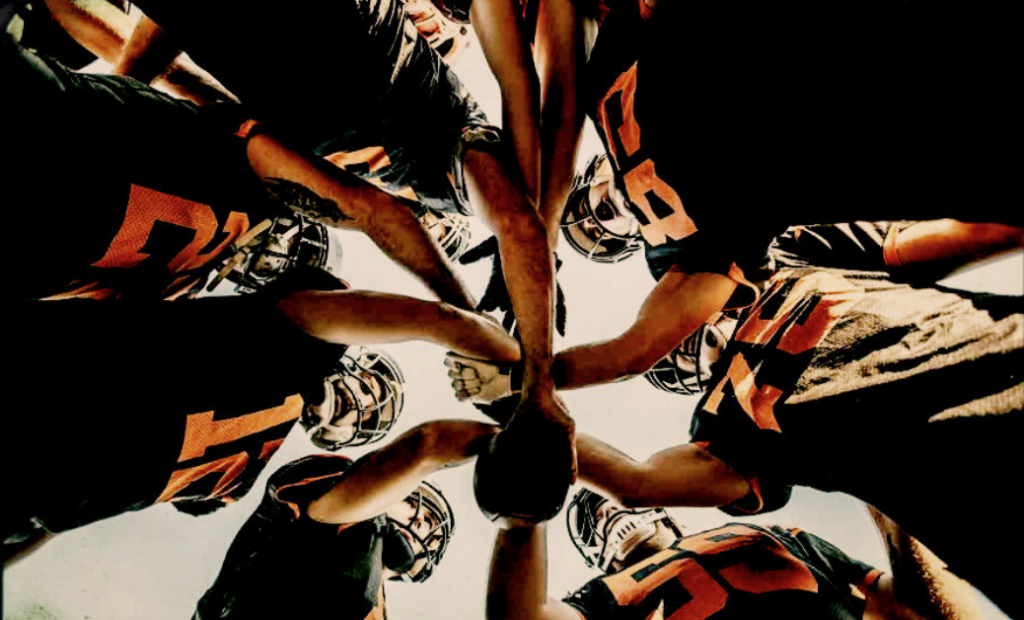
Football is a sport where teamwork is essential for success, requiring players to coordinate, communicate, and trust one another. Each team is made up of different units—offense, defense, and special teams—that must collaborate to achieve a shared goal: winning. No player can succeed alone; victory comes from every teammate executing their role effectively.
On the offensive side, quarterbacks rely on their offensive line for protection, while receivers and running backs depend on accurate passes and well-placed blocks. Defensively, players must work together to cover opponents, disrupt plays, and force turnovers. Even on special teams, teamwork plays a crucial role in executing kicks, punts, and managing field position.
Great teams thrive on chemistry, strategy, and selflessness. Players need to trust their teammates, adjust to challenges, and execute plays with precision. The most successful teams function as a unified group, where each player understands their responsibilities and contributes to the collective effort. Football is more than just individual skill—it is a game built on teamwork, discipline, and unity.
SKILL AND TECHNIQUE
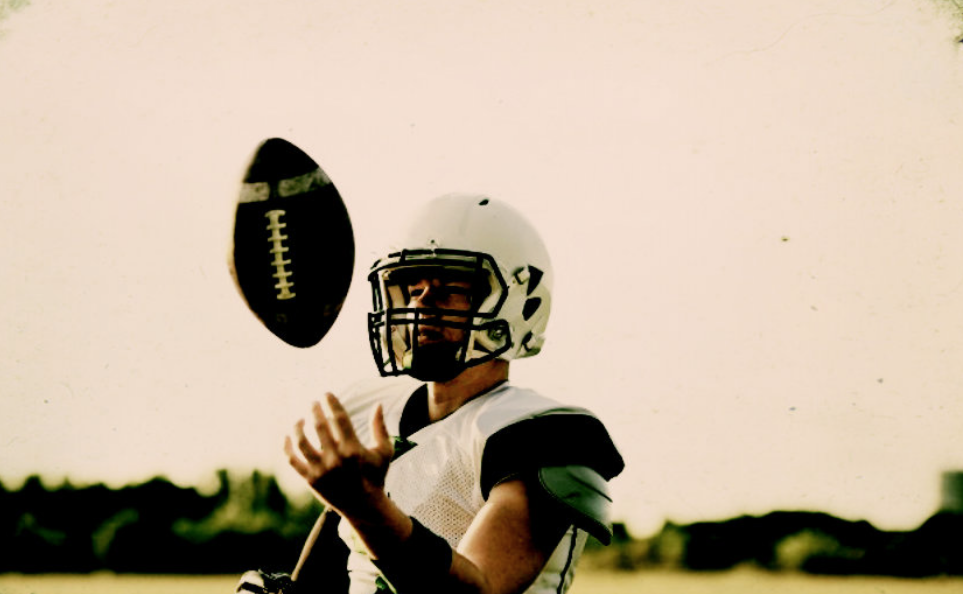
Success in football relies on a combination of skill and technique, integrating physical prowess, sharp thinking, and tactical awareness. Players who master fundamental abilities such as dribbling, passing, shooting, and defending can significantly impact the game. Agility, speed, and ball control are crucial for maneuvering past defenders and keeping possession, while tactical awareness aids in understanding formations and positioning. Advanced skills like executing set pieces, controlling the ball with precision, and strategic communication further enhance a player’s effectiveness. Excelling in football isn’t just about strength—it requires intelligence, accuracy, and a relentless drive for improvement.
The foundation of success in football lies in mastering fundamental skills that every player must develop. Dribbling allows players to evade defenders while keeping possession, and passing is crucial for maintaining fluid team play. Shooting is key to scoring, demanding accuracy, power, and proper technique. On defense, skills such as tackling and positioning are essential for stopping the opposing team’s progress. Moreover, ball control, agility, and spatial awareness enhance a player’s overall performance. These core skills serve as the stepping stones for mastering advanced techniques and executing strategic plays on the field.
Footwork is a fundamental part of a football player’s skill set, enhancing agility, stability, and overall effectiveness on the field. Efficient footwork helps players react quickly, shift direction seamlessly, and keep control of the ball under challenging conditions. It is key to mastering dribbling, passing, shooting, and defensive techniques, enabling players to evade defenders and execute precise plays.
Field awareness is the skill of reading the game, predicting movements, and making rapid, tactical choices. It involves consistently observing the field, assessing positioning, and spotting chances or threats before they materialize.
Strength and conditioning A football player’s performance relies heavily on strength and conditioning, which improve endurance, power, and agility while reducing the risk of injuries. A structured training program ensures optimal fitness, allowing players to perform at their best for the entire game. Moreover, effective strength and conditioning contribute to faster recovery, greater resilience, and overall physical well-being, making them essential to football training.
Quick decision-making is a vital skill that allows players to react swiftly and efficiently in fast-moving scenarios. The ability to assess situations and make the right choice in an instant often determines the outcome of a play.
- Running – This core skill in football affects a player’s agility, endurance, and overall gameplay. It is vital for everything from accelerating past opponents to maintaining energy levels throughout a demanding match.
- Catching – In football, catching is an important skill, especially for goalkeepers and outfield players in certain game scenarios. It requires precise timing, strong hand-eye coordination, and proper technique to effectively secure the ball.
- Passing – a crucial role in football, helping teams retain control, advance plays, and generate scoring opportunities. Mastering this skill requires precision, awareness, well-timed execution, and the right technique for effective distribution.
- Blocking – tackling is a key defensive technique used to halt an opponent’s advance and limit scoring threats. Effective tackling depends on strategic positioning, well-timed execution, and physical resilience to successfully challenge or redirect the ball.
- Tackling – defensive ability in football helps players stop opponents and reclaim possession. Mastering it demands proper form, precise timing, and physical resilience to challenge effectively without committing a foul.
American football involve refined skills and tactical moves that improve a player’s game and offer an edge on the field. Mastering them demands precision, dedicated training, and an awareness of in-game situations.
Kicking and Punting :
football techniques used for passing, shooting, and ball clearance during matches. These skills require a combination of power, accuracy, and proper execution to maximize effectiveness. Players who excel in both can influence the game by maintaining control, creating offensive opportunities, and dictating the pace of play.
- Field Goals and Extra Points – Placekickers need to work on their kicking technique to become more accurate and consistent.
Punting – To manage field position, bettors concentrate on directional kicking, distance, and hang time.
Special Teams:
- Coverage Units – Maintaining lane discipline and open-field tackling skills are essential for players to contain returns.
- Return Skills – Returners need speed, vision and navigate to elusiveness through coverage units.
STRATEGY AND TACTICS
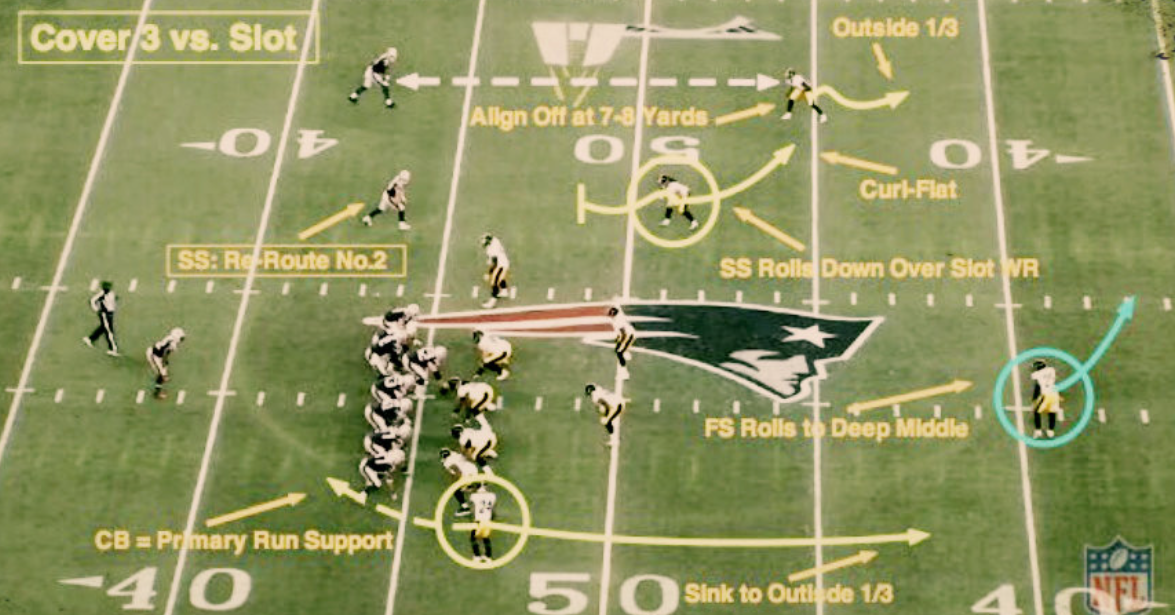
American football is a fast-paced sport that combines tactical execution with strategic preparation, focusing on offensive, defensive, and special teams tactics. Teams create detailed game plans to outmaneuver opponents, with strategies varying depending on their attack or defense. Some teams play more conservatively to control the game through possession, while others focus on swift counterattacks.
Offensive Strategies:
The offense uses a combination of running and passing plays to advance the ball and score points, allowing teams to balance their approach to maintain adaptability and control the game clock.
- Hurry-Up Offense – This strategy focuses on rapid play execution to prevent the defense from making substitutions, maintaining offensive momentum while wearing down the opposing defenders.
- Formations and Play Calling – To take benefit from defensive weaknesses offensive teams employ a variety of formations. Play calling and formation selection are crucial for generating mismatches and gaining yardage.
Defensive Strategies:
The defense aims to prevent scoring by employing various formations and plays, including stopping the run, defending against the pass, and executing blitzes to pressure the quarterback.
- Blitzing -In addition to creating pressure and interfering with offensive plays, sending extra players to rush the quarterback carries the risk of leaving defensive backs in one-on-one coverage.
- Defensive Formations – Defenses utilize different formations, such as the 4-3 or 3-4, to counter offensive strategies. The choice of formation depends on the offensive setup and the specific game situation
Special Teams Strategies:
Special teams manage kickoffs, punts, and field goals, requiring specialized tactics to manage field position and scoring opportunities, significantly influencing the game’s momentum and outcome.
- Clock Management – Effective clock management through strategic timeouts and play selection, such as running plays to keep the clock moving, is crucial, especially in tight games. Teams may use a hurry-up offense or deliberate pacing to dictate the game’s tempo.
- Field Positioning – Special teams are crucial in shaping field position, which can greatly impact a game’s outcome. Efficient kickoff and punt coverage can trap the opposing offense deep in their own territory, while strong return units can secure advantageous starting positions.
Mastering and applying these strategies and tactics demand a thorough understanding of the game, player strengths, and adaptability to the opponent’s actions. Coaches and players constantly evaluate and refine their approaches to maintain a competitive advantage.
COMPETITION
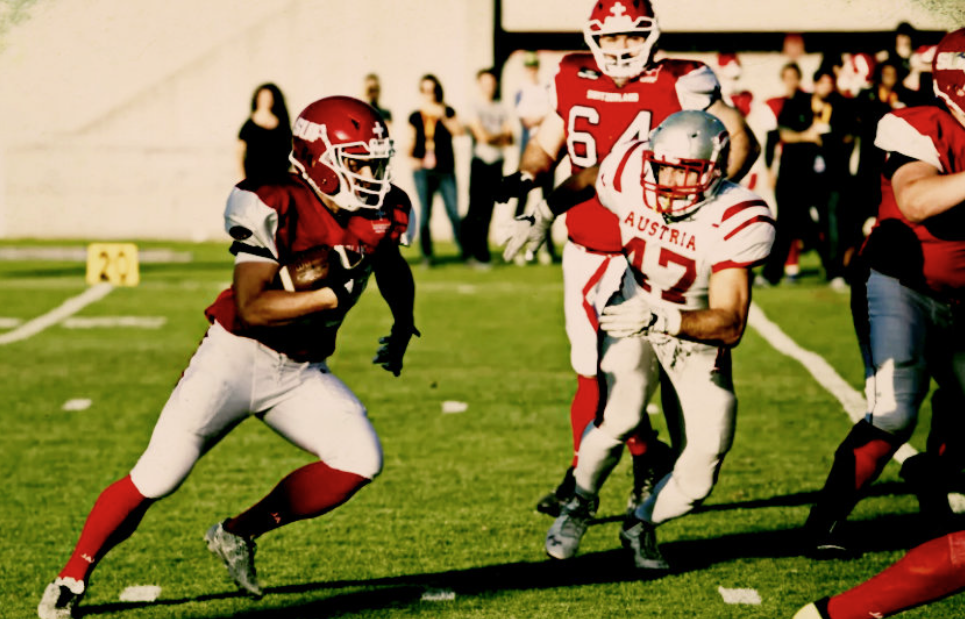
American football offers a diverse range of competitive levels, from youth leagues to professional play, enhancing its vibrant culture and broad appeal through structured competitions between teams at professional, collegiate, and international levels.
Youth and High School Level – American Youth Football provides structured opportunities for children to participate in sports, focusing on skill development and teamwork, and as they progress to high school, it becomes a key extracurricular activity.
Collegiate Level – College football involves teams from universities and colleges competing in conferences. Performance can lead to bowl game invitations and the College Football Playoff, which determines the national champion. The NCAA oversees football programs across various divisions, with Division I being the most prominent. The Football Bowl Subdivision (FBS) includes major conferences like SEC, Big Ten, and ACC.
Professional Level – The National Football League (NFL) is the top professional football league in the US, consisting of 32 teams divided into the American Football Conference (AFC) and the National Football Conference (NFC). The league’s championship game, the Super Bowl, is a cultural phenomenon and one of the most-watched sporting events globally.
International Level – American football is expanding internationally, with flag football set to debut at the 2028 Summer Olympics in Los Angeles. The sport’s global presence is evident in international competitions like the IFAF World Championship, featuring national teams from around the world.
The diverse competition levels not only foster athlete development but also contribute to the ongoing popularity and dynamic evolution of American football.
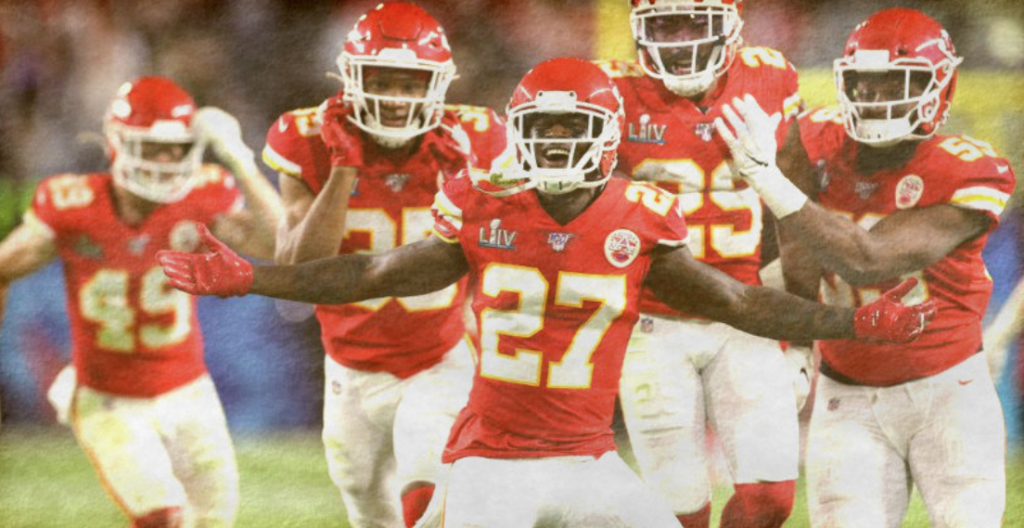
The global passion for American football is vital for its growth and success, as it generates revenue through merchandise sales, broadcasting rights, and sponsorships. It also fosters understanding and appreciation among diverse cultures, enhancing the sport’s competitiveness and diversity.
International Games and Expansion – The NFL plans to host its first game in Australia at the Melbourne Cricket Ground in 2026, marking a significant step in its global expansion beyond the United States, including games in Mexico City, Berlin, Madrid, and Melbourne.
Growing Fan Base – American football’s popularity has surged in Mexico, Canada, Germany, Brazil, and the UK, with 51% of Mexico’s population showing interest, and 20% in Germany and Brazil.
Media and Broadcasting – The NFL’s international broadcasting initiatives, including the Super Bowl, have significantly aided its global development, with over 50 watch parties hosted by the Department of State on six continents by 2025.
Development Programs and Future Prospects – To cultivate talent and enthusiasm worldwide, the NFL has launched initiatives like the International Player Pathway Program, offering international athletes opportunities to compete in the league. Meanwhile, flag football—a non-contact variant of the sport—is growing in popularity globally and is set to make its Olympic debut at the 2028 Summer Games in Los Angeles.
Football is the most popular sport globally, uniting people from all walks of life to watch and play, fostering a strong sense of community and shared excitement, especially during major events like the National Football League (NFL). At its core, football revolves around teamwork, skill development, and the drive to compete at the highest level. It’s a fast-paced, exhilarating game cherished by millions around the world!
You want more information about football :
ALSO READ :
- THE DIFFERENT POSITIONS : THE IMPORTANT POSITION IN A FOOTBALL GAME
- THE RHYTHM OF VICTORY : THE 7 IMPACT OF MUSIC IN FOOTBALL GAME
- THE HISTORY : A HISTORICAL PERSPECTIVE ON EARLY HISTORY IN FOOTBALL GAME
- THE MOVIE : A STORY OF FOOTBALL GAME
